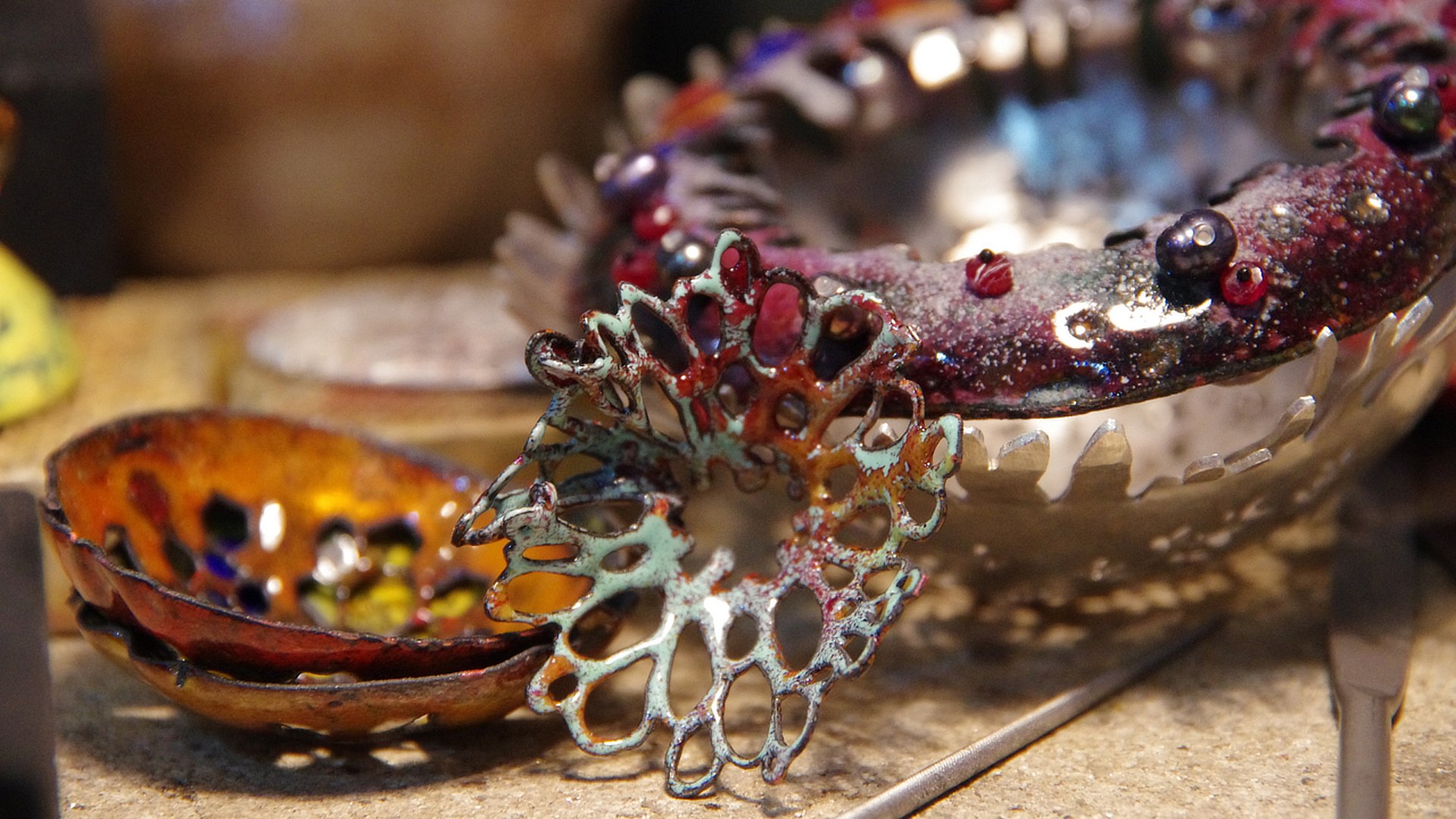
blog
Welcome to my blog. This is a place where I think out loud, show you what I’m up to in the studio, share impressions of inspiring events or everyday moments that moved me. Some entries are carefully curated essays, others are just a few thoughts, sometimes written in English and sometimes in German.
Featured posts

newest blog entries:
Stipendium "Junge Kunst und Neue Wege"
Im Sommer 2022 erhielt ich das Stipendium „Junge Kunst und Neue Wege“ des Bayerischen Staatsministeriums für Wissenschaft und Kunst, das mir erlaubte, mich einem größeren künstlerischen Projekt zu widmen. Im Rahmen dieses Stipendienprojekts habe ich die Kollektion SYBILLA entwickelt, die auf den Herbstmessen dieses Jahres zum ersten Mal präsentiert wird.
“JUNGE KUNST UND NEUE WEGE”
Arbeitsergebnisse eines Stipendiums des Bayerischen Staatsministeriums für Wissenschaft und Kunst
Auf Deutsch.
Im Sommer 2022 erhielt ich das Stipendium „Junge Kunst und Neue Wege“ des Bayerischen Staatsministeriums für Wissenschaft und Kunst, das mir erlaubte, mich einem größeren künstlerischen Projekt zu widmen. Im Rahmen dieses Stipendienprojekts habe ich die Kollektion SYBILLA entwickelt, die auf den Herbstmessen dieses Jahres zum ersten Mal präsentiert werden soll. In diesem Blogeintrag folgt eine detaillierte Beschreibungen sowie zahlreiche Abbildungen des Arbeitsprozesses. Mitunter sind weitere Einträge dieses Blogs unterverlinkt, die einige der recherchierten Themen zusätzlich aufgreifen und vertiefen.
Zielsetzung
Ich hatte mir in diesem Projekt zum Ziel gesetzt, eine besonders große und komplexe Arbeit in Angriff zu nehmen, bei der meine Arbeitsweise nicht vom potentiellen wirtschaftlichen Erfolg des Resultats beeinflusst sein sollte. Insbesondere wünschte ich mir Zeit und Mittel, umfangreicher mit verschiedenen Emaillefarben und -techniken experimentieren zu können. Ich wollte durch die Verbindung von tragbarem Schmuck und Installation Arbeiten schaffen, die die Abgrenzung zwischen Angewandter Kunst, Schmuck und Objekt verwischen. Inhaltlich wollte ich mich in das Thema (Paradies-)Gärten vertiefen und einzelne Symbole daraus gestalterisch in meiner Arbeit hervorheben. Die Arbeit sollte in einer Installation gipfeln, mehrschichtig und ganzheitlich wie ein Ökosystem gedacht.
Arbeitsprozess & UMSETZUNG
Die Umsetzung dieses Projekts begann zunächst mit vielen Zeichnungen (freiere Skizzen und lösungsorientierte Entwurfszeichnungen) und Recherchen. Ich beschäftigte mich intensiv mit Themen wie etwa historischen Paradiesvorstellungen, mit der mittelalterliche Suche nach dem Garten Eden, und dem neuzeitliche Interesse am Forschen und Sammeln von (aus westlicher Sicht) „exotischen“ Pflanzen, Tieren und kulturellen Objekten, die in botanischen Sammlungen, Florilegien und Wunderkammern präsentiert wurden. In dieser Zeit rutschte mein Fokus vom Granatapfel (mit dem ich mich schon einige Jahre intensiv beschäftigt hatte) als zentrales Symbol des Paradiesgartens, mehr in Richtung der ästhetisierten botanischen Zeichnungen des 17. und 18. Jahrhunderts im Allgemeinen. Speziell kristallisierte sich die stilisierte drei- oder sechsblättrige Blüte als Symbol der botanischen Neuankömmlinge in Europa für mich als gestalterisches Element heraus. Die achsensymmetrische Blüte ist eine visuelle Verschmelzung von Ordichee, Tulpe, Schwertlilie und anderen Zwiebelgewächsen mit farbenprächtiger und „exotischer“ Blütenfülle.
Dabei fasziniert mich speziell der fließende Übergang zwischen Imagination und naturwissenschaftlicher Beobachtung in den botanischen Illustrationen des 17. und 18. Jahrhunderts. Oft sind in Zeichnungen dieser Zeit komplette Ökosysteme dargestellt, wobei die Fantasie Wissenslücken gekonnt ausfüllt oder Beobachtetes frei ausschmückt. Beispielsweise werden Pflanzen und Insekten gemeinsam abgebildet, die in Wirklichkeit keine spezielle Beziehung zueinander haben. Auch werden Pflanzen gleichzeitig blühend, Früchte tragend und Samen formend dargestellt – ein biologisch unmöglicher, mythisch-paradiesischer Zustand also (und gestalterisch von großem Interesse). Komposition und Ästhetisierung sind dabei sehr wichtig. Eine Künstlerin und Naturforscherin, deren Arbeiten hier ganz besonders hervorstechen, ist Maria Sybilla Merian (1647-1717). Meine Kollektion SYBILLA, die hier in diesem Stipendienprojekt ihren Anfang nimmt, ist nach ihr benannt.
Dem Zeichnen, Skizzieren und Lesen folgten zahlreiche Emaille-Experimente. Ich konnte durch das erhaltene Stipendium eine große Menge neuer Emaillefarben und Zubehör sowie Kupfer und Silber zum Emaillieren erwerben. Aus den neuen Farben fertigte ich als erstes Farbproben, die dazu dienen, die Charaktereigenschaften der Farbe zu testen und als Farb-Referenz für zukünftige Arbeiten zur Verfügung zu haben. Konkret bedeutet das also, dass die pulverisierten Emaillefarben gewaschen, auf kleine Kupfer- oder Silberplättchen aufgetragen und anschließend aufgebrannt und katalogisiert werden müssen. Auf der Suche nach spannenden Kombinationen kombinierte ich in manchen Experimenten mehrere Farben in Lagen übereinander.
Experimente dieser Art sind immer sehr arbeitsintensiv, aber nur so sind auch zufällige und neue Entdeckungen möglich. Da die zu emaillierenden Elemente meiner Kunstobjekte ebenfalls sehr zeitaufwendig goldschmiedisch gefertigt werden (ausnahmslos von Hand ausgesägt, aufgetieft, gelötet, konstruiert), möchte ich natürlich vorher sicher sein, mit welchen Farbkombinationen die gewünschten Effekte erzielt werden können. Trotzdem ist der Emailleprozess selbst von vielen Variablen beeinflusst und das Arbeitsergebnis oft unvorhersehbar. Genau dieses Zusammenspiel von Planung und Spontanität macht für mich den Reiz am Emaillieren aus: Dem Arbeitsprozess wohnt für mich eine Magie inne, die es hervorzulocken gilt. Das funktioniert nicht mit Wille und Gewalt, sondern nur durch Zeit und Zuwendung, Geduld, Demut, und dem Wissen, dass dieser Emailleprozess mir ein Tor zu etwas Größerem, Mitreißenden öffnen kann.
Im Herbst 2022 hatte ich einen ersten großen Halsschmuck der Kollektion SYBILLA entwickelt: Ein barock anmutendes, opulentes, bordeauxrot emailliertes Collier aus archetypischen dreiblättrigen Blüten, teils durchbrochen, wie von Insekten zerfressen, die mit mehrsträngigen Granatketten verbunden sind. Die dreifach gespiegelte achsensymmetrische Blüte als Archetyp der „exotischen“, aus fernen Ländern importierten Blume steht im Zentrum des Colliers. Gefasst sind die Blüten in weitere, noch stärker zerfressene Blüten aus patiniertem Silber. Es ist ein Reigen aus Ordnung und Chaos, aus Schönheit und Zerfall, aus Fressen und Gefressenwerden.
Ein zweiter Halsschmuck ist aktuell im Entstehen, sowie parallel mehrere kleinere Stücke wie Statement-Ohrringe und Tischobjekte. SYBILLA II ist noch ausladender, mit zart changierenden rosa-schwarz-opalweißen Blütenblättern, die mit Süßwasserperlen zu einer opulenten Komposition zusammengefügt werden sollen. Dieses Stück wird in ein größeres Aquarellkunstwerk eingefügt, sodass die emaillierte Blütenelemente eine Verwischung zwischen zweidimensionalen und dreidimensionalen Darstellungen, zwischen Objekt, Angewandter Kunst und Schmuck bewirken.
Pandemie, Stipendium & Weiterentwicklung
Die Corona-Pandemie bedeutete für mich, wie für so viele im Kreativbereich, einen großen Einschnitt in meinen Arbeitsprozess. Mir fehlte es an Zeit, Freiraum und Material, mich an etwas Größeres zu wagen, das nicht zwangsläufig mit wirtschaftlichen Erfolgen verknüpft war. Diese Freiheit hat mir nun das Stipendienprogramm „Junge Kunst und Neue Wege“ geschenkt.
Ich konnte mit Hilfe des Stipendiums eine ganz neue Kollektion zu entwickeln. Die hier abgebildeten Arbeiten sind nur der Anfang; in den nachfolgenden Monaten sind noch weitere Arbeiten dieser Kollektion entstanden und werden kontinuierlich weiterentwickelt - sowohl kleinere Stücke und ausladende Statement-Colliers, als auch multidisziplinäre Installationen. Hier dazu einige Beispiele:
SAILING FOR EDEN
Christian paradise was understood by many medieval theologists as a very specific place on earth that marked the beginning of human time. Medieval mapmakers took up the challenge to locate the mysterious Garden of Eden cartographically.
Sailing for Eden
Columbus & the Medieval Search for Paradise
Written in English.
In July 1498, after a perilous sea journey, a Genoese admiral and his crew sighted land, at long last. The admiral was Christopher Columbus and this was the third of his four voyages of discovery, venturing further south than on his previous expeditions. The official reason for his expedition was to discover a sea route to Asia; however, Columbus also nurtured more private ambitions concerning the whereabouts of paradise.
Although famous for discovering America, Columbus never realised that he had indeed found a continent unknown to Europeans. He believed himself to be near Asia’s easternmost part, having calculated that Asia must be a few thousand nautical miles to the west of Europe (Scafi 2013:80). The fleet had been becalmed for weeks in scorching temperatures; fearing the threat of mutiny and sickness (perhaps the crew were adherents of the wide-spread medieval belief that the equatorial zone, or the ‘torrid zone’, was inhabitable to humans and that, as the Greek scholar Erastothenes believed, the sun would burn men alive (Rushby 2006:68)), Columbus eventually turned west and reached modern-day Trinidad.
Calculations based on his probably erratic compass readings lead him to the peculiar postulation that he was sailing up a slope (Rushby 2006:67). He later wrote to King Ferdinand and Queen Isabella of Spain, who had partly funded his mission: “I have found such great irregularities that I have come to the following conclusions concerning the world: that it is not round as they describe it, but the shape of a pear, which is round everywhere except at the stalk, where it juts out a long way, […] something like a woman’s nipple” (cited in Rushby 2006:68). Columbus concluded that this great earthly nipple was the exact point where the long-lost Garden of Eden was to be found, and that he was going to play a pivotal, and possibly well-rewarded, role in its discovery (Rushby 2006:68).
Christian paradise was understood by many medieval theologists as a very specific place on earth that marked the beginning of human time. Medieval mapmakers took up the challenge to locate the mysterious Garden of Eden cartographically. This endeavour entails a fascinating fragment of Western intellectual history, not least “because of the inherent paradox of mapping the unmappable” (Scafi 2013:30). Towards the end of the 15th century, the idea of an earthly paradise in a real, geographical location somewhere in the east was still very much ingrained in the public imagination. Paradise was believed to be inaccessible as it was situated on top of a very high mountain, thus Columbus’ conclusion of sailing upwards led him to the belief that he was advancing towards paradise.
Christian interest in the location and mapping of an earthly paradise, sparked in the fifth century CE by St Augustine’s literal interpretation of Genesis, was more or less restricted to Latin Christian Europe. Eastern Christians preferred a more symbolic reading of the paradise narrative (Scafi 2013:30). Early debating on the nature and location of the Garden of Eden resulted in two main approaches, one allegorical and one literal. The literal interpretation produced a story of paradise tied closely to the plane of human history; it brought the divine almost into reach. St Augustine believed that to doubt the historicity of the Bible implied that Scripture could be questioned; and to deny the historical existence of Adam and Eve and the story of the Fall was to risk the whole Christian dogma falling apart (Scafi 2013:43). Such a literal approach would imply a very real site for paradise. The question of paradise’s whereabouts caught the imagination of biblical exegetes “who drew out of Augustine’s writings the latent geographical discourse and who named the place where mapmakers could put paradise” (Scafi 2013:44).
The Ebstorf World Map is a splendid example of medieval ideas of paradise. Possibly made in Ebstorf in Northern Germany and dated between the late thirteenth and early fourteenth century, the Ebstorf world map depicts the Garden of Eden as an “event-place at the very boundary of time and space” (Scafi 2013:72). It is represented at the very top of the map by a rectangle enclosing Adam and Eve, the four rivers of paradise as they disappear into the ground, the Tree of Life and the Tree of Knowledge of Good and Evil. The mysterious garden is located in the East, near India. Unlike modern maps, it is oriented with east is the top, signifying it as the most important direction because of the presence of paradise. A giant Christ is embracing the world; his feet can be seen sticking out at very bottom in the west.
While Columbus certainly had more modern navigational maps at his disposal, he did believe – rightly so – that by sailing westward around the globe, he could reach what lay East of Europe. Finding himself approaching the mouth of the Orinoco river, Columbus was amazed by the vast quantities of freshwater flowing into the ocean. Contemporary depictions of paradise imagined a great river near paradise, the source of the four paradisiacal rivers that connected earth and paradise. This, together with the fertility and beauty of the land they sailed alongside, convinced Columbus that he was on the outskirts of the actual Garden of Eden, as he wrote in his log: “All this provides great evidence of the Earthly Paradise, because the situation agrees with the beliefs of those holy and wise theologians” (cited in Rushby 2006:69). An encounter with this blessed land’s inhabitants swept away all remaining doubts: “Canoes came to greet them and Columbus noted the finely proportioned people who wore pearls and gold on their necks and arms” (Rushby 2006:69) and who heaped the explorers with gifts of maize, fruits and tame parrots. The inhabitants seemed to have no sense of private property or ownership – something that amazed the Europeans navigators beyond measure. Although not new to Columbus, those parrots seemed significant. In Latin Christian theology, all animals could speak before the Fall. Now, “they were on the very doorstep of Eden and talking birds appeared” (Rushby 2006:69).
Although Columbus was a devout Christian, he was most certainly also influenced by other, more ancient, models of paradise: Ovid’s description of the Golden Age in his Metamorphosis when men and women lived together peacefully without the need for laws in a perpetually fruitful rural idyll, the “rough-hewn place of innocence and rugged virtue” (Rushby 2006:70) of Arcadia, and the more refined perfection of Elysium. Features of these classical myths had been incorporated into Christian iconography for centuries.
Having reached his staggering conclusion of paradise’s proximity, Columbus never attempted to reach paradise itself; obviously it was inaccessible and beyond the horizon for ordinary humans (Scafi 2013:80). As he wrote in his log, he assumed the stream leading up to the summit to be impossible to navigate (Scafi 2013:80). For him, the “mystery that paradise could be simultaneously present on earth and also in the beyond was sufficient in itself” (Scafi 2013:80). Christian belief in an earthly Eden rested on its inherent duality: its separateness and simultaneous connectedness (through the four rivers) is the key to understanding the medieval worldview.
By attempting to unravel the geographical contradictions of paradise, renaissance Christian scholars found that they had set themselves a near impossible task. The notion of an earthly paradise was essentially a paradox, part of a real geography yet escaping ‘normal’ conditions such as climactic zones and scientific laws (Scafi 2013:82). In paradise there were no seasons, just a perpetual spring-summer, with fruits and flowers thriving simultaneously all year round. The question where on earth such a perfectly temperate place could be found pre-occupied many scholars and explorers; as did it eventually fuel Columbus’ imagination. Towards the end of the middle ages, the problem of earthly paradise’s exact location assumed greater significance in light of the recovery of astronomical geography – a part of the overall intellectual revolution indebted to Arab intellectuals in Spain, who (re)introduced ancient Greek and Islamic learning to Europe (Scafi 2013:82). The new geographical and astronomical data, allowing for more detailed maps and greater navigating precision, distanced the notion of earthly paradise further and further from any real terrestrial location. Ultimately, “deprived of its aura of mystery and being dissected as a topographical feature, the Garden of Eden was to prove to be in an inaccessible nowhere (Scafi 2013:83).
In his mistaken discovery of Eden, Columbus had indeed marked a turning point in the history of paradise-seeking (Rushby 2006:77). Broken in health and raving with religious obsession regarding the cataclysmic end of time and restoration of paradise on earth, Columbus died in 1509, “steadfastly believing that Cuba was part of Asia, also that he had located the Garden of Eden somewhere to the south of it, and that Christ was coming soon, thanks to his own efforts” (Rushby 2006:76). The wonderful possibilities of the new land, America, drew European minds away from old struggles between Islam and Christianity – at least for a while. The focus had “shifted away from the apocalyptic fever of religious battles in the Holy Land and towards nature and America” (Rushby 2006:77). Suddenly, earth had wider, unexplored spaces filled with novelties and distractions; spaces that needed to be explored, treasures of discoveries to be hauled back and re-assembled at home in a paradisiac microcosm of the known world: the birth of the cabinet of curiosities, the botanical garden and private ‘natural science’ collections.
Sources:
· Hobhouse, Penelope, with Edwards, Ambra. 2019. The Story of Gardening. United Kingdom: Pavilion Books Company Ltd.
· Rushby, K. 2006. Paradise – A History of the Idea that Rules the World. United Kingdom: Constable Publishers.
· Scafi, A. 2013. Maps of Paradise. London: The British Library.
















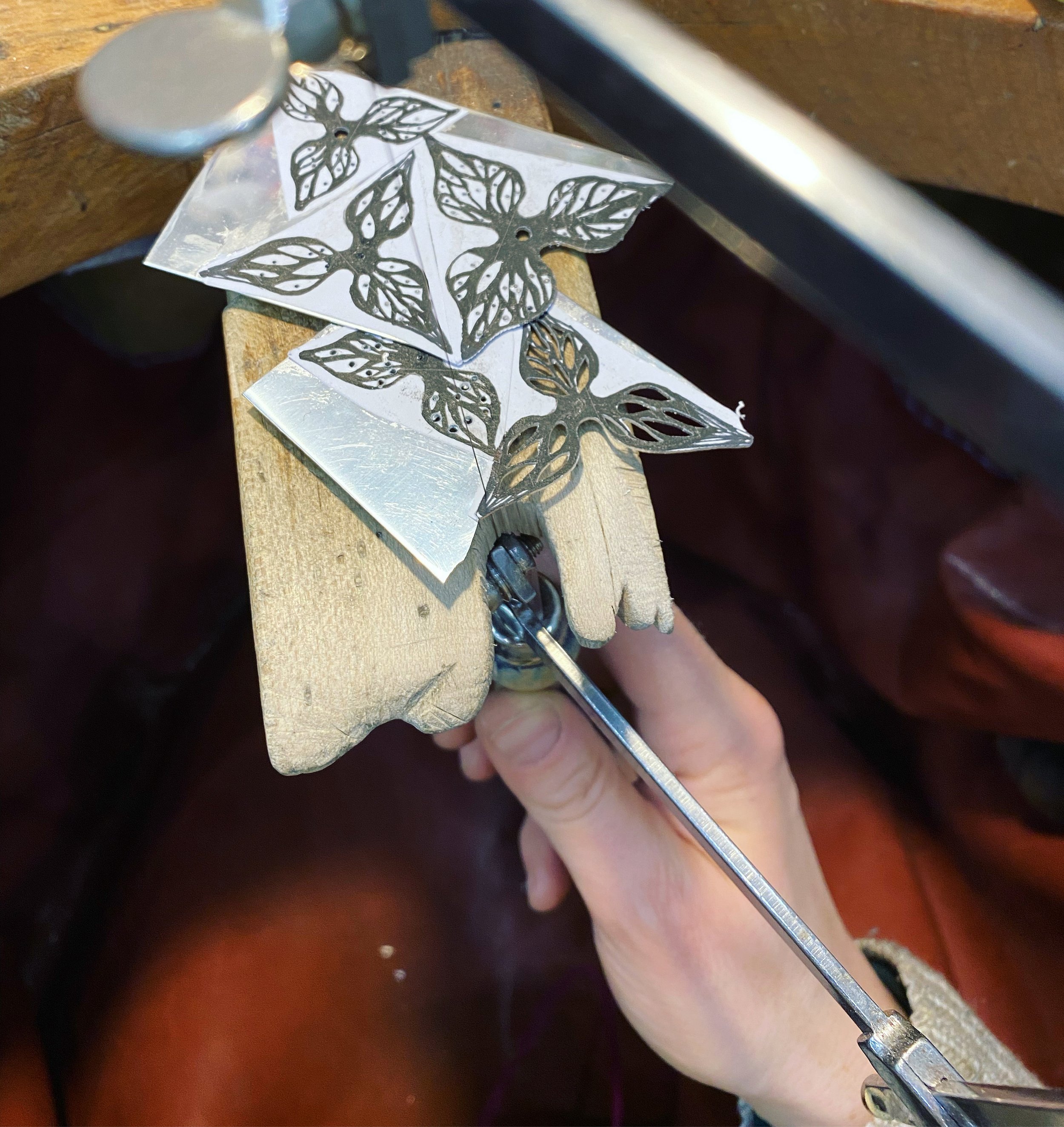













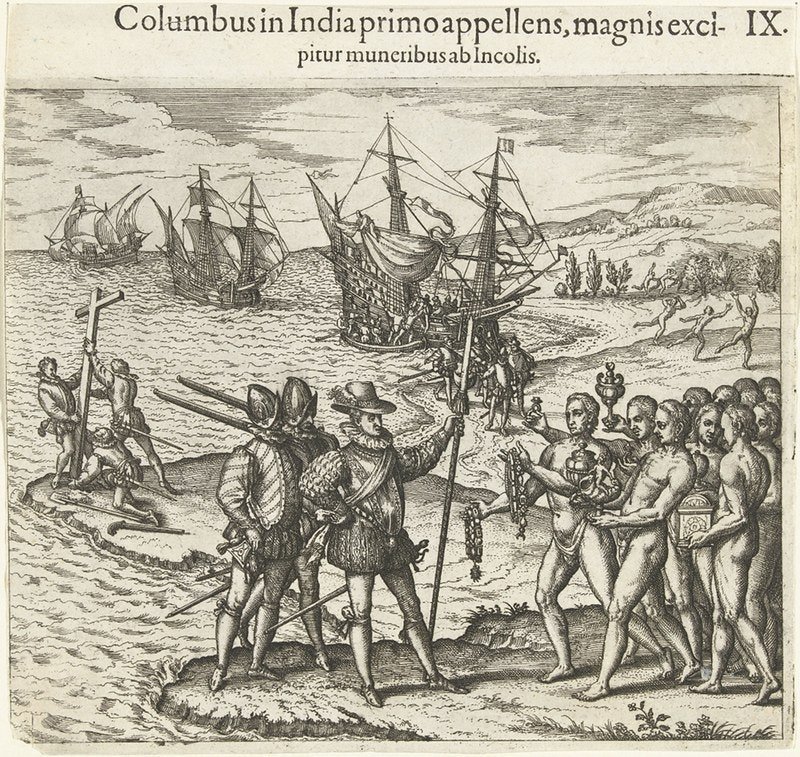
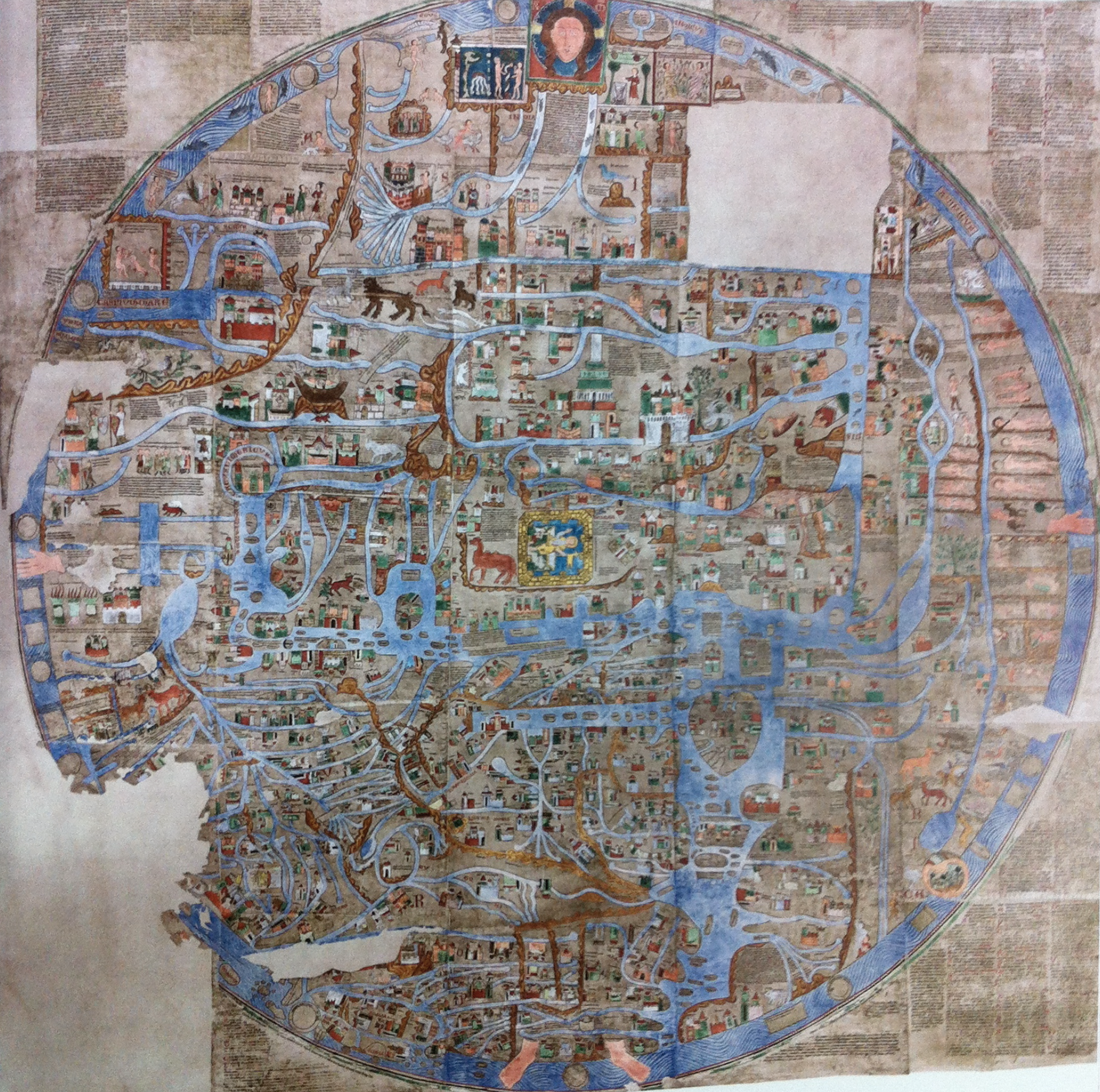
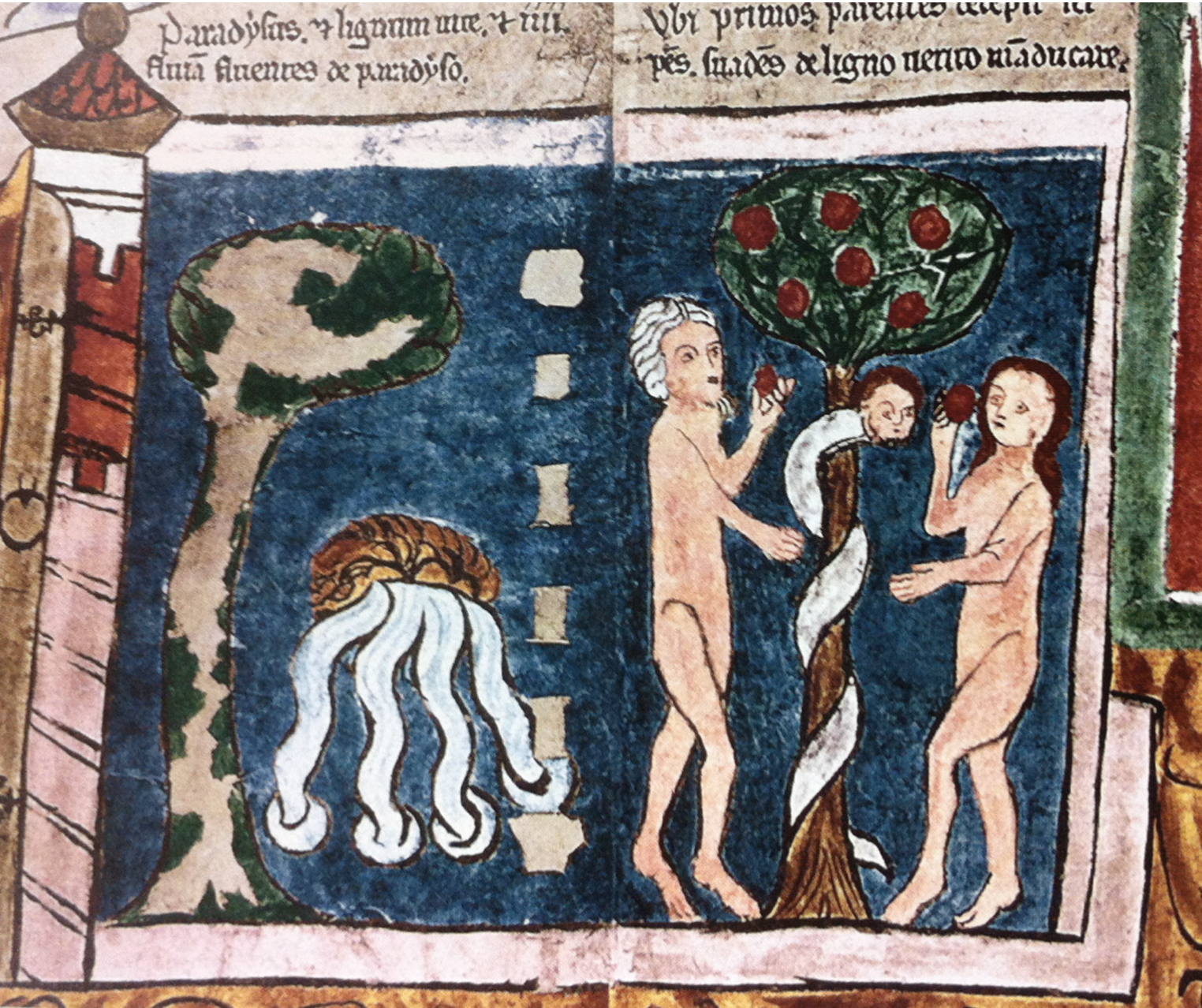
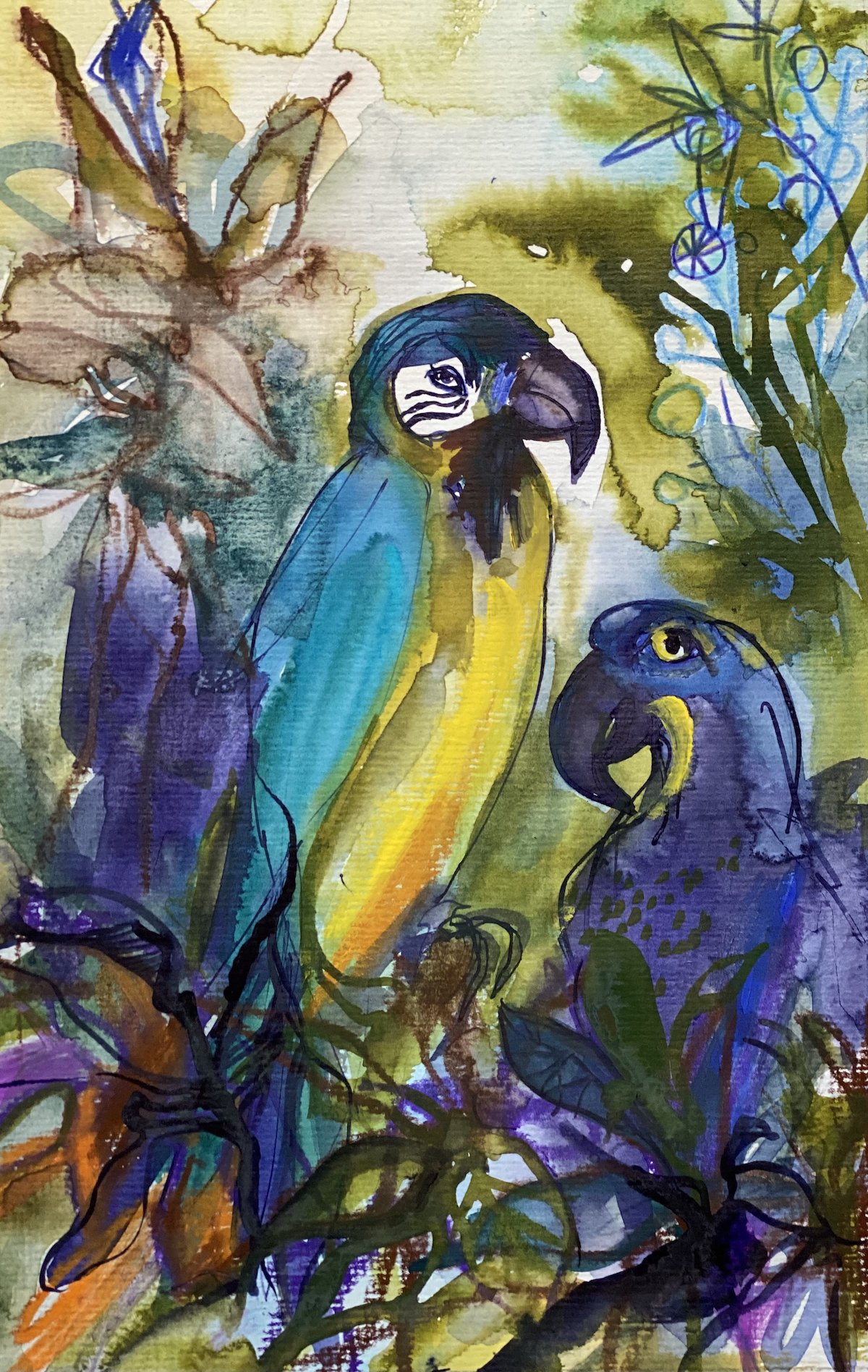
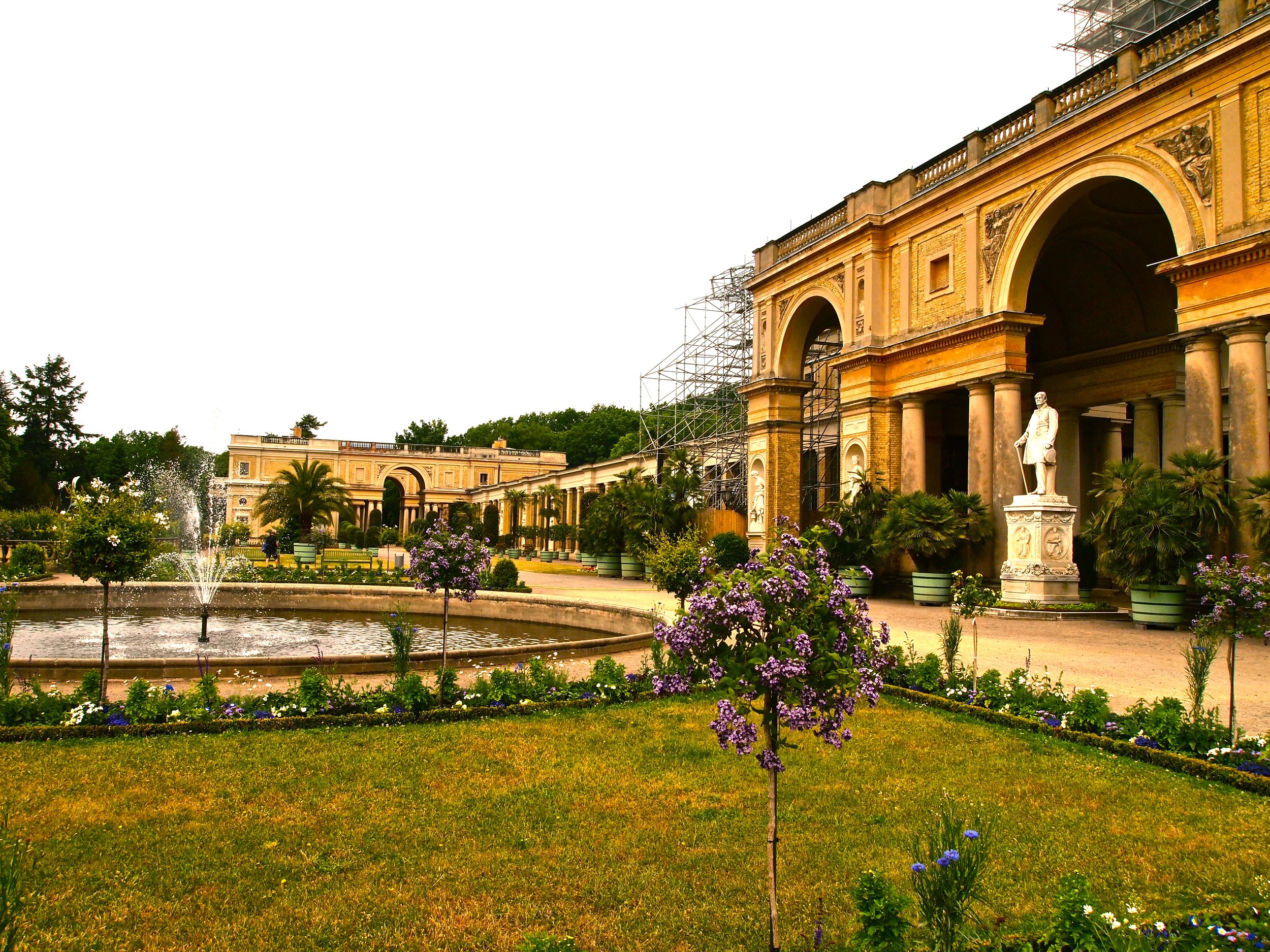
It’s winter. I cherish this white and noiseless time between the bustle of our Christmas season and the start of the new year. Since moving to Europe, it’s taken me a few years to learn to fully appreciate winter. Now, I know it’s one of the reasons I wanted to move here in the first place: I needed a real winter, I needed its pause and reflection, its going-underground, its gathering-of-forces, its quiet stripping away of the unnecessairy, its gestation for new creativity to emerge.